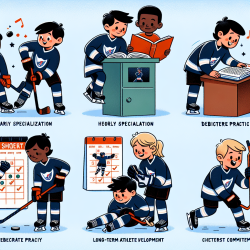Introduction
In the realm of genetic disorders, cleidocranial dysplasia (CCD) has long been associated with the RUNX2 gene. However, recent research has unveiled a new genetic player, CBFB, as a contributor to a skeletal disorder resembling CCD. This discovery, published in the Journal of Medical Genetics, offers fresh insights and potential for improved diagnosis and treatment strategies. For practitioners, understanding these findings can enhance their skills and encourage further research.
The Study's Revelations
The study examined eight subjects from five unrelated families, all presenting with clinical features reminiscent of CCD. Notably, each subject harbored a heterozygous pathogenic variant in the CBFB gene, with no alterations in RUNX2. This suggests a new locus heterogeneity for CCD, expanding our understanding of the genetic landscape of this disorder.
Key findings include:
- Identification of five pathogenic variants in CBFB.
- Clinical features such as dental and clavicular abnormalities, with normal stature and neurocognitive issues distinguishing CBFB-related CCD from RUNX2-related CCD.
- CBFB encodes the core-binding factor β subunit, interacting with RUNX proteins to form transcription factors, explaining phenotypic differences.
Implications for Practice
For practitioners, these findings underscore the importance of considering genetic heterogeneity in CCD diagnoses. Here are some actionable insights:
- Expand Genetic Testing: Incorporate CBFB gene testing alongside RUNX2 to ensure comprehensive diagnosis.
- Tailor Interventions: Recognize the distinct phenotypic features of CBFB-related CCD, such as normal stature and developmental delays, to customize therapeutic approaches.
- Encourage Further Research: The study highlights the need for additional research into CBFB's role in skeletal disorders, which could lead to novel therapeutic targets.
Conclusion
The identification of CBFB as a contributor to a CCD-like disorder marks a significant advancement in genetic research. By expanding our understanding of CCD's genetic basis, practitioners can enhance diagnostic accuracy and therapeutic outcomes. Embracing these findings will not only improve patient care but also drive future research in the field.
To read the original research paper, please follow this link: Heterozygous pathogenic variants involving CBFB cause a new skeletal disorder resembling cleidocranial dysplasia.










